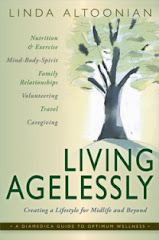It’s my philosophy that we spend the first half of our life buying and gathering as many “things” as we possibly can and the second half trying to get rid of them all. The problem is that often nobody wants what we have valued for so long.
Gone are the days when children appreciate the heirlooms handed down from one generation to another. We baby boomers couldn’t wait to inherit and cherish the treasures our parents and grandparents once owned. The younger generation wants what’s new and stylish and is for the most part not interested in our grandmother’s silver tea service or our mom’s antique chest of drawers.
So what to do if you have a house full of “treasure” that you had hoped to pass on?
Well, one alternative is to hold onto everything and let your heirs deal with it after you’re dead. They can decide then what they want, and you won’t be hurt if they want to get rid of it all. The drawback of this course of action is that in the meanwhile, your house is more of a cluttered storage unit than a home.
I actually know some people who want desperately to sell a bigger home than they need, but won’t because of the stuff they feel the need to pass on to their kids. This is lunacy. Ask your kids if they want anything and, if they do, give it to them now.
Artist and designer, William Morris, once said, “Have nothing in your house that you do not know to be useful or believe to be beautiful.”
I believe that should be our barometer for deciding what we still really want, purging what we don’t need or use, and creating order from chaos.
Begin small. Start with your jewelry. Several of my friends have made a killing by selling their platinum, sterling silver and especially gold jewelry. The value is determined by weight, so it doesn’t matter if it’s broken or missing parts. Is anyone really going to wear again your charm bracelet or class ring from high school?
Tackle your closets, one at a time so the job does not feel so overwhelming. If you haven’t worn something for over a year, it’s likely you won’t again. Consider resale shops for gently worn clothes and accessories. Make sure the clothes are clean and on hangers. Be sure they have size tags.
Then onto cabinets….I am a firm believer in using all my good china, crystal and silverware, but if you don’t and no one wants them, have an estate sale, which yields more than a “garage” sale, sell to an antique mall if they’re heirlooms, or consider ebay. Take close-up photos so patterns are obvious and attach history of anything that has one.
The last and often most terrifying battleground is often the garage. If you don’t mind spending hours preparing for and conducting a garage sale, that might be the way to go, but remember that people come to those prepared to low ball. A friend just recently had one and said she felt violated because people wanted to give her very little for that which still had at least sentimental value.
If you’ve really decided to get rid of things (And make sure you have decided so you won’t feel any seller’s remorse), then refrain from sentimentality and look at the big picture--both profit and pleasure that comes with being clutter free and well organized. What you have left after the sale can be donated and considered a tax write-off. Call on a charity that will send out a truck and load for you.
After you have ridded yourself of the extraneous, you will be shocked at the elation you’re going to feel. Order offers a very special kind of peace and a tremendous amount of beauty.
Philosopher Lao Tzu said, “Be content with what you have, rejoice in the way things are. When you realize there is nothing lacking, the whole world belongs to you.”
I agree.
Saturday, September 24, 2011
Subscribe to:
Post Comments (Atom)


No comments:
Post a Comment